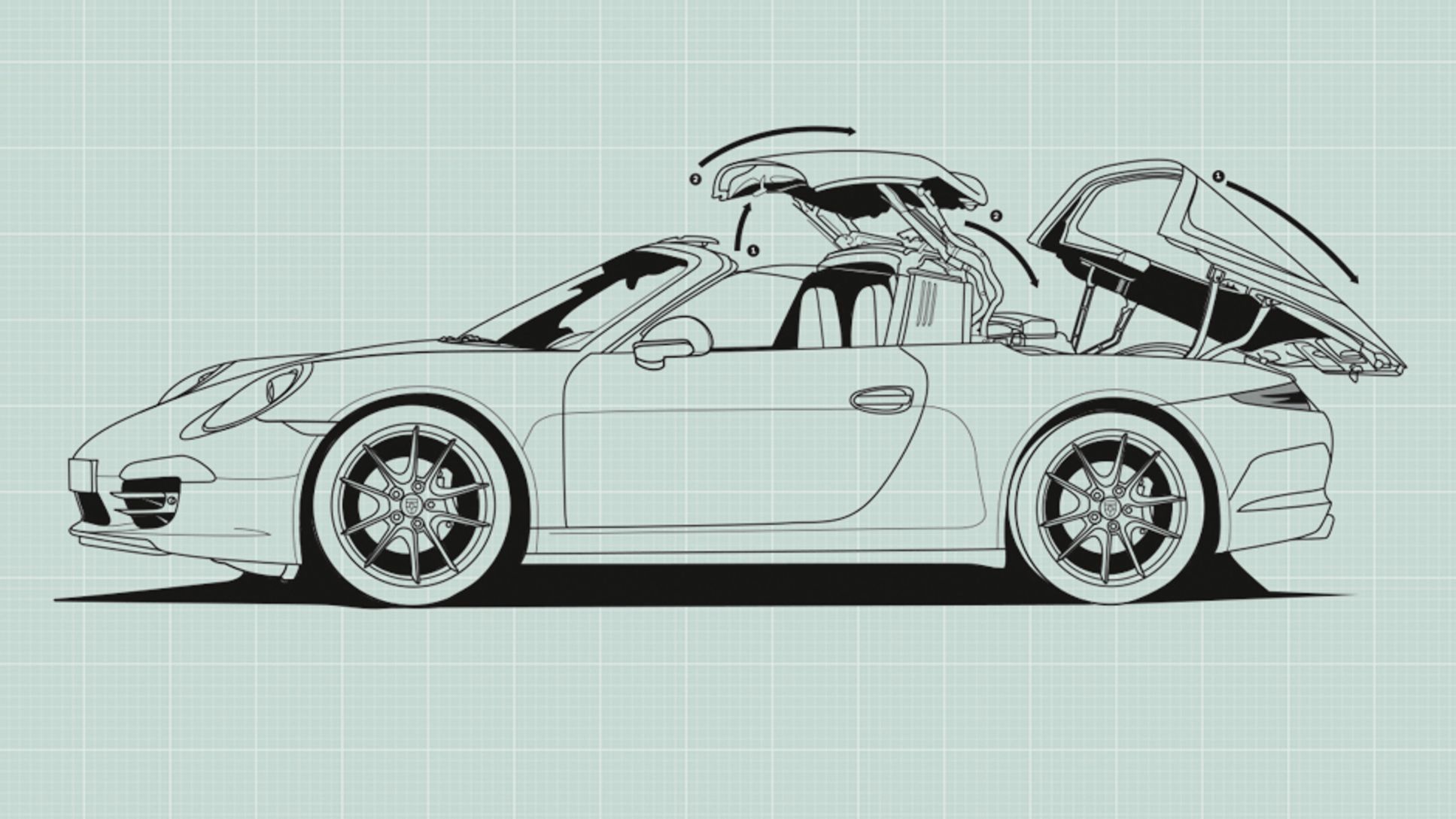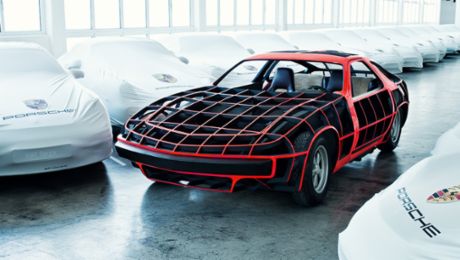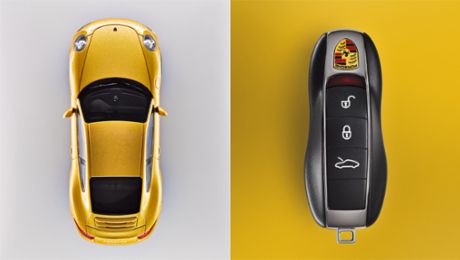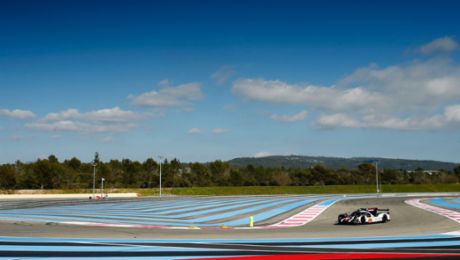The very first one was open, and so is the most recent one. Sixty-six years lie between the legendary No. 1 of Ferry Porsche and the new 911 Targa. Sixty-six years in which Porsche drivers have enjoyed being one with the elements at any time of the year. Seeing, hearing, smelling, and feeling everything. It is a driving experience that could not be any more authentic, direct, or intense. Pure Porsche.
In the interest of more tranquil moments, there is also the top. It, too, has been around for 66 years. What the No. 1’s hood and the 911 Targa’s top have in common is an outer cover made of fabric. What differentiates them is the fabric itself – and what lies underneath it. The top of a Porsche these days is a microcosm of highly refined materials, innovative technology, and sophisticated kinematics.
Designs of the tops are unique
And also a question of character. The designs of their tops are as unique as the sports cars themselves: the Boxster has its own very special version, and the 911 has two at once with the Cabriolet and the Targa. The 918 Spyder super sports car opens up in a completely different way, and who could ever forget the unconventional tops of the Boxster Spyder and the various 911 Speedsters?
The “top of the tops” is the panel bow top on the current 911 Cabriolet, where Porsche has set a new standard for folding tops. “It means we have the most high-grade top currently available,” says Dr. Heinz Soja, head of Body Mechanics Development and a team of seventeen developers who work on convertible roof systems. With lines identical to those on the Coupé, the Cabriolet’s fabric top traces an elegant arc from the front windshield frame to the lid of the roof compartment. No ribs are visible under the fabric, nor are there any other elements that might interrupt the smoothly flowing design.
Lightweight construction is extremely important
The panel bows are what make this possible. The fabric top – with the exception of the side parts – stretches over a firm surface composed of four individual but perfectly aligned magnesium segments. “Lightweight construction is extremely important for every Porsche top,” notes Soja. “The less mass there is up there, the lower the center of gravity.”
With everything closed off, the driver and passenger enjoy superb climatic and acoustic conditions, closer than ever to those of the Coupé. Under the exterior fabric there is a layer of butyl that makes the roof absolutely watertight, and then a mat of thermal and acoustic insulation covering the entire structure.
On the inside, rigid panels line the roof segments. The sides are completely covered with stretched fabric, so that no technical components are visible when the top is closed. And yet another detail makes the design of the top of the Porsche 911 Cabriolet unique – namely, the integrated electric folding wind deflector.
Fewer than ten seconds to open
The developers were consumed with the idea that the new top of the 911 Targa had to be completely effortless to operate. The result is a central roof section that opens fully automatically, in spectacular choreography, with the moving rear window. The Targa top is literally on top of it all. The fabric top with the two magnesium panel bows comes mainly from the Cabriolet. “Our customers want these visuals,” explains Soja. “They want people to notice that it’s a fabric top.”
Porsche tops are no strangers to superlatives. They take fewer than ten seconds to go from closed to open – and in the 911 Cabriolet it can even do it at speeds of up to 50 km/h. The same is true in reverse, from open to closed, as well. That is a record. No fully automatic roadster roof can be closed faster than that of the Porsche Boxster. This record time is one of the successes made possible by lightweight construction. The front magnesium frame of the Boxster top not only lowers the weight but also is dimensioned in such a way as to cover itself when opened. There is no need for an additional cover – and its extra weight.
Two carbon shells for the 918 Spyder
But Porsche can do other things as well. It can show its purist side, depending on the character of the sports car in question. For the 918 Spyder, for example, that means two carbon shells to remove by hand, without any automatic assistance. That cuts the weight and lowers the center of gravity – the top priority for Porsche’s super sports car.
Or take the lightweight top on the 911 Speedster from 2010. It was an easy-to-operate kinematic masterpiece that reflected the purist speedster concept in an especially sophisticated way. This superior-quality top could go through the carwash and resist winter weather, with no effect on speed when either open or closed.
In contrast, the top on the Boxster Spyder from the year before served only to protect against the sun or bad weather. Developed primarily to be driven when open, this two-seater featured an especially lightweight, flat fabric cap on a carbon frame that could be closed with just a few movements. These designs attract attention. “We were asked to design tops not only for cars but also for yachts,” remarks the developer Soja. But Porsche had to decline the invitation. The open sports cars simply took precedence.
Info
Text first published in the Porsche customer magazine Christophorus, No. 368.
Consumption data
911 Targa (Type 991): Fuel consumption (combined): 10.0 l/100 km to 8.7 l/100 km, CO₂ emissions: 237 g/km to 204 g/km
911 Cabriolet (Type 991): Fuel consumption (combined): 10.0 l/100 km to 8.4 l/100 km, CO₂ emissions: 235 g/km to 195 g/km
Boxster (Type 981): Fuel consumption (combined): 9.0 l/100 km to 7.9 l/100 km, CO₂ emissions: 211 g/km to 183 g/km
918 Spyder: Fuel consumption (combined): 3.1 (3.0*) l/100 km, Electric power consumption (combined): 12.7 kWh/100 km, CO₂ emissions: 72 (70*) g/km, * with Weissach package




